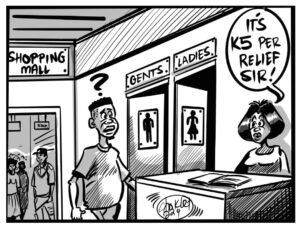INTEREST rates on loan facilities could still rise despite the Bank of Zambia’s (BoZ) decision to maintain the Monetary Policy Rate (MPR) at 11.5 per cent due to the elevated cost of funds, says Bankers’ Association of Zambia (BAZ) chief executive officer Leonard Mwanza.
And Mwanza has announced that the Non-Performing Loan (NPL) ratio ended at 8.9 per cent by the end of 2019, but might go up again this year amidst the increasing cost of liquidity, which worsens default rates.
In an interview, Mwanza said that the BoZ’s decision to maintain the MPR at 11.5 per cent would not prevent commercial banks from increasing lending rates on loan facilities because of the elevated cost of funds, which still hovered around 29 per cent and could not be sustained for long.
Last Wednesday, the BoZ opted to maintain the MPR at 11.5 per cent on account of subdued economic growth and persistently acute liquidity challenges.
Interest rates on loan facilities increased to an average 28 per cent by the end of last year from 26.1 per cent by September 30, 2019, reflecting elevated government financing needs amidst tight liquidity conditions.
“Obviously, interest rates, which are linked to the Monetary Policy Rate will not increase, but I think the governor (Dr Denny Kalyalya) alluded to the fact that liquidity is expected to be on the high side both on deposits and loans. So, if we are looking at the cost of funds on the market, they are now going towards 29 per cent and the average lending rates are about 28 per cent. So, that tells you a story that that can’t be sustained for too long, the lending rates must follow suit. So, much as the Monetary Policy Rate was maintained, you have challenges in terms of the pricing of liquidity on the market and the recent auctions of government bonds gives an impression where the new 364-days (tenure) is sitting,” Mwanza said.
“I know it’s close to 29 per cent and then that’s the average cost of funds, and I think that’s the psychological contracting cost of funds on the market and banks usually have to put a mark-up on above that psychological cost of funds on the market. So, yes, those (interest rates) linked to the MPR may not go up, but we must also state that, generally, the cost of funds on the market will move to somewhere around 29 per cent and when banks are putting a price, they will look at that as the general cost of funds on the market.”
And Mwanza, a former Natsave managing director, observed that the NPL ratio, though currently at 8.9 per cent, remained vulnerable to breaching the 10 per cent industry average threshold due to the inherent risks that came with high pricing of loans.
“So, we ended at, I think 8.9 per cent, which is below the minimum required threshold of 10 per cent. So, when you mark it against that from a commercial banking perspective, that means it was within the expected margins, except that because of the increase in interest rates signalling the rising cost of funds, we are saying there are inherent risks around the pricing of loans in the market, which are hovering around the possibility of Non-Performing Loans moving away from that band because of the elevated cost of funds in the market. So, the higher the interest rates, the more likely people are to default. So, much as it’s within the 10 per cent minimum threshold, we need to recognize the underlying risks that are within the market, especially the cost of funds and the high interest rates, which can affect people’s ability to service loans when interest rates are on the high side. So, it’s a risk, but we ended the year within the acceptable threshold of 8.9 per cent,” said Mwanza.
“There is no formula to forecast, the only thing is that let’s look forward to the potential expectation that perhaps inflation can start dropping going into the second half of the year and also the stability of electricity supply on the market. I think you have seen that load shedding levels have drastically reduced so that will also help to improve production. So, there is no formula to forecast, but just to say challenges are real and they are there, but obviously, we can just look at the positive expectation, especially on the agriculture output and the stability of electricity. But there are always other underlying risks around the corner like you never expected the Coronavirus to hit the global market and its impact is yet unquantified, but definitely, Zambia, being a good partner of China, we expect some squeeze coming out of that line.”










